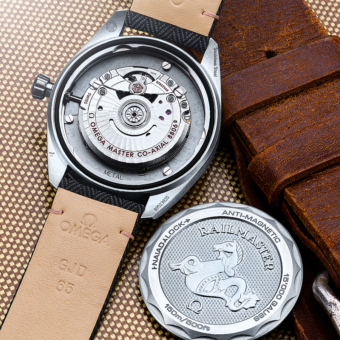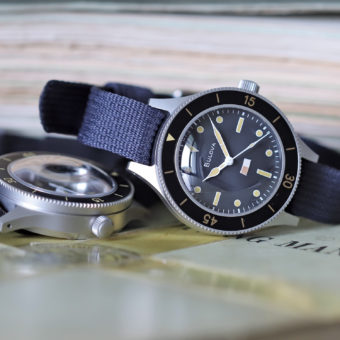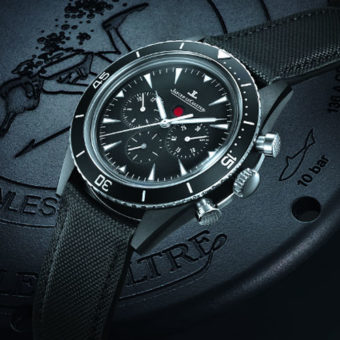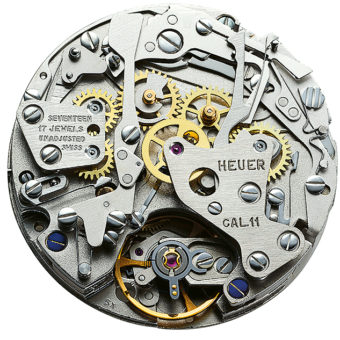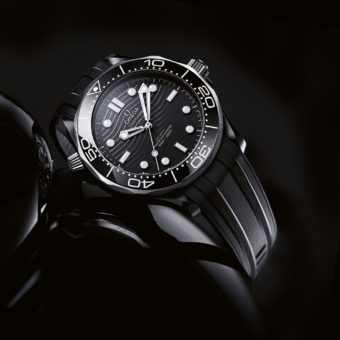A few years ago, Omega introduced a retro-styled version of its well-known Speedmaster chronograph watch, the Omega Speedmaster ’57 Co-Axial Chronograph, named for the year of the first Speedmaster’s release and featuring that original model’s straight lugs that extend from the case and its familiar bracelet. Here’s a closer look.
The 56-year-old Omega Speedmaster is known as the “moonwatch” by collectors because of its unique role as the wristwatch worn by NASA astronauts for all six lunar landings, even though the watch itself was developed more than a decade before human beings set foot on the moon. The Speedmaster ’57 adds several modern touches that distinguish it both aesthetically and technologically from its predecessor. The movement is Omega’s co-axial Calibers 9300 (in the steel, titanium and two-tone steel/gold versions) and 9301 (in the 18k gold versions), which has a column-wheel chronograph incorporating both the 12-hour and 60-minute counter hands onto a single subdial.
This arrangement means that the chronograph hours and minutes can be read together intuitively, much like the hours and minutes on the main dial. It also allows for a modern redesign of the Speedmaster’s old tricompax dial design: there are now two subdials rather than three, with hours and minutes at 3 o’clock and small seconds at 9 o’clock. The date window occupies a window at 6 o’clock, while a center-mounted hand tallies chronograph seconds. Another hallmark of the movement’s design is that the two chronograph pushers function independently of each other, so there is not risk of inadvertently operating the chronograph mechanism. The brushed bezel displays the model’s traditional tachymeter scale. The 41.5-mm case is water-resistant to 100 meters.
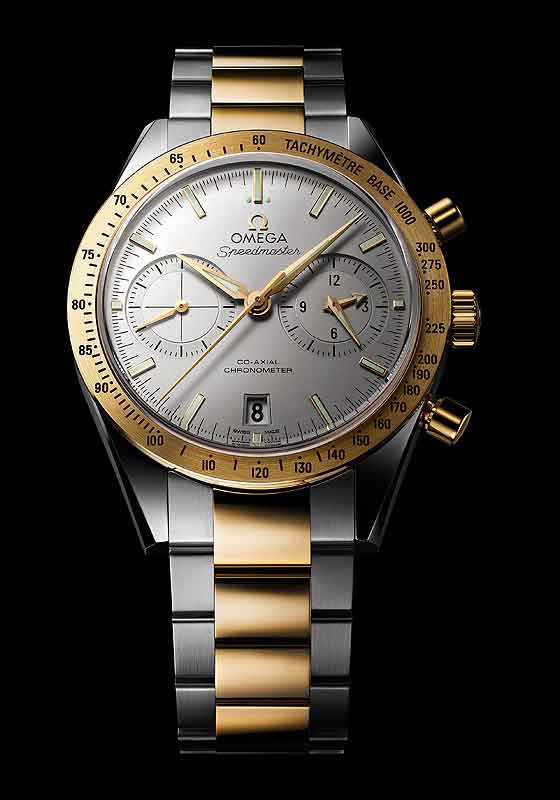

Calibers 9300/9301 are also notable for their balance springs, which are etched from a wafer of non-magnetic silicon. According to Omega, these silicon balance springs help to deliver improved chronometric performance, and the company is so confident of this that it offers a full four-year warranty on each watch. The two movements, both of which boast Omega’s hallmark co-axial escapement, differ only in their level of decoration: Caliber 9301, which powers the gold models of the Speedmaster ’57, has a “luxury finish” that includes an 18k gold rotor and balance bridge.
Several variations of this vintage-styled timepiece are available, including models in both a yellow-gold or rose gold case. Each comes on either a matching bracelet or a leather strap — black for the rose-gold watch, brown for the yellow-gold, and each is offered with a black or silvery-white dial. The indices on both models are made of gold and coated with Super-LumiNova. Another version, in lightweight grade 5 titanium, has a white dial and blued hands and is available on a titanium bracelet or leather strap. There are also stainless steel Speedmaster ’57 models with a range of dial choices including black or blue PVD with rhodium-plated indices and silver-colored with gold applied indices. These models are also available on brown leather straps or steel bracelets. The bi-color steel and 18k gold versions (pictured, above and below) offer either a silvery-colored or black dial, paired with either a leather strap or a gold-and-steel two-tone bracelet.
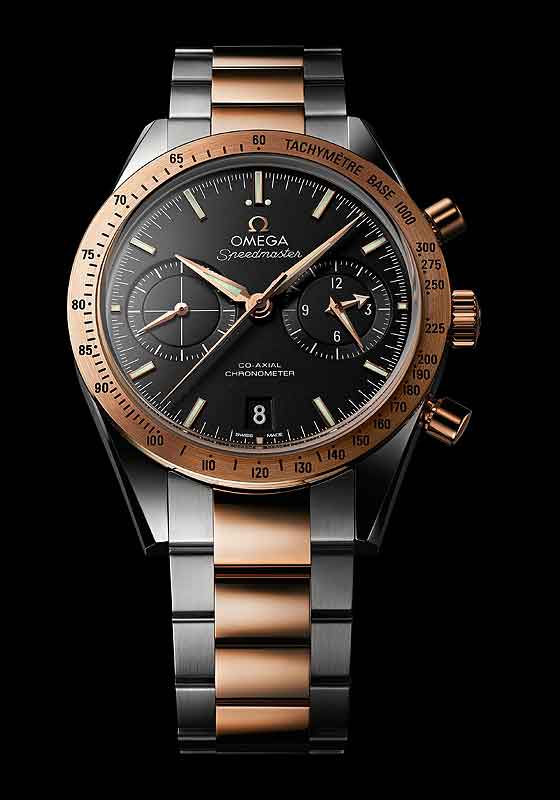
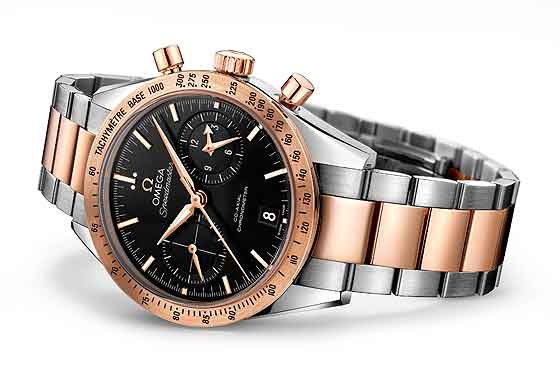
This article was originally published on September 16, 2013, and has been updated.

